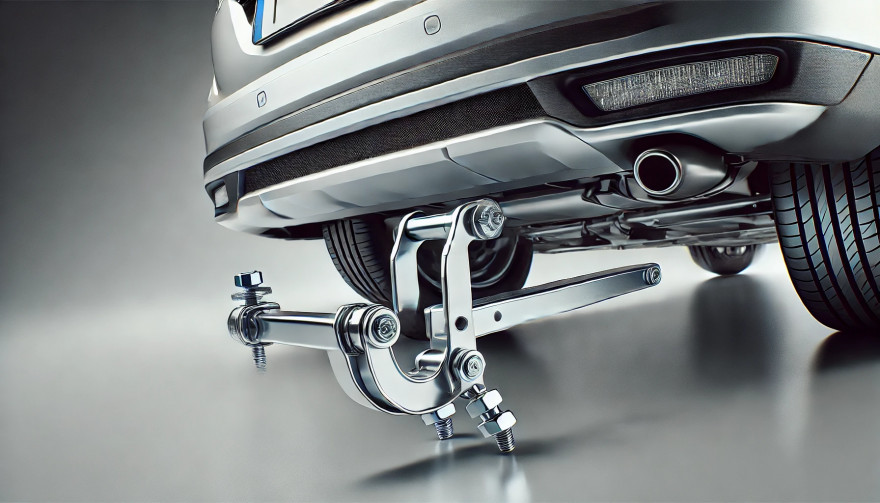Detachable tow bars offer versatility and convenience for car owners who occasionally need to tow. Unlike fixed tow bars, they can be removed when not in use, maintaining your car's aesthetics and avoiding unnecessary bulk. However, understanding how they work, their benefits, and their maintenance requirements is essential to get the most out of your tow bar. Here’s what you need to know.
Why Choose a Detachable Tow Bar?
A detachable tow bar is an excellent solution if you only tow occasionally or prefer a clean look for your car when the tow bar is not in use. Here are some of its key advantages:
- Aesthetic Appeal: When removed, the tow bar does not interfere with the car's design.
- Convenience: Detachable tow bars are easy to attach and remove without tools, making them user-friendly.
- Versatility: They allow you to tow various loads, from trailers to bike racks, without permanently altering your car's appearance.
- Legal Compliance: In some regions, a visible, unused tow bar can lead to fines. A detachable option helps you avoid this.
Types of Detachable Tow Bars
Detachable tow bars come in different types, each suited to specific needs and preferences:
Vertical Detachable Tow Bars
- Design: These tow bars fit seamlessly into your car’s underside, leaving no visible parts when removed.
- Best For: Those prioritizing aesthetics and a clean finish.
Horizontal Detachable Tow Bars
- Design: These are partially visible but still maintain a low profile.
- Best For: Easier access and handling without compromising too much on appearance.
Swan Neck Tow Bars
- Design: These have a slim, curved neck, making them stylish and less obtrusive.
- Best For: European-style vehicles and those who need a compact towing solution.
How to Install and Use a Detachable Tow Bar
Installing and using a detachable tow bar is straightforward, but following the proper steps ensures safety and efficiency:
- Read the Manual: Always start by reviewing the manufacturer’s instructions specific to your tow bar.
- Clean the Mounting Area: Dirt or debris can interfere with secure attachment.
- Secure the Tow Bar: Align the tow bar with the mounting bracket and ensure it clicks into place.
- Test Stability: Gently pull the tow bar to confirm it’s securely attached.
- Remove When Not in Use: Detach the tow bar and store it in a clean, dry place to prevent wear.
Common Issues and Troubleshooting
While detachable tow bars are convenient, they can occasionally present challenges. Here’s how to address some common problems:
- Stuck Tow Bar: If the tow bar is difficult to remove, check for rust or dirt in the mounting area. Use a lubricant to loosen it, but avoid using excessive force.
- Loose Connection: Ensure the tow bar clicks firmly into place during installation. A loose tow bar can be dangerous.
- Key Issues: If the locking mechanism doesn’t work, inspect the key and lock for dirt or damage. Sometimes, a replacement key may be necessary.
Tips for Maintaining Your Detachable Tow Bar
Proper maintenance can extend the life of your detachable tow bar and ensure its performance:
- Regular Cleaning: Clean the tow bar and mounting area to prevent rust and buildup.
- Lubricate Moving Parts: Apply a small amount of lubricant to the locking mechanism and other moving parts for smooth operation.
- Inspect for Damage: Check for signs of wear, cracks, or rust, especially if you tow frequently.
- Store Properly: When not in use, store the tow bar in a protective case or bag in a dry location.
Safety Considerations When Towing
Towing comes with responsibility. Here are some safety tips to keep in mind:
- Check Weight Limits: Never exceed your car or tow bar’s towing capacity.
- Inspect Connections: Ensure the tow bar and trailer hitch are secure before every trip.
- Test Lights: Verify that your trailer’s brake and signal lights are functioning properly.
- Drive Cautiously: Towing affects handling and braking. Allow extra time for stopping and maneuvering.
Benefits of Investing in a Detachable Tow Bar
For many drivers, a detachable tow bar offers the perfect balance of functionality and style. Whether you’re towing for leisure, work, or practicality, this option ensures:
- A clean car appearance when the tow bar is removed.
- Versatile use for different towing needs.
- Easy storage and maintenance.
Detachable tow bars are a versatile and practical choice for occasional towing. With proper installation, regular maintenance, and a focus on safety, you can enjoy their convenience without compromising your car's aesthetics. Whether you're hauling a trailer or attaching a bike rack, a detachable tow bar offers flexibility and ease for all your towing needs.
What Will You Receive When Your Order is Complete?
When you place an order, you’ll receive two perfectly cut keys for Witter, GWD, TOW Trust, or Renz towbars, tailored to your original key code. These keys are compatible with lock codes within the ranges TR01-TR10 or 32001-32200. Simply select your code from the dropdown menu (e.g., TR03), and we’ll take care of the rest.


 (1)_1736345323.jpg)
 (1)_1736339630.jpg)
 (1) (1)_1736436407.jpg)
 (1)_1739261364.jpg)